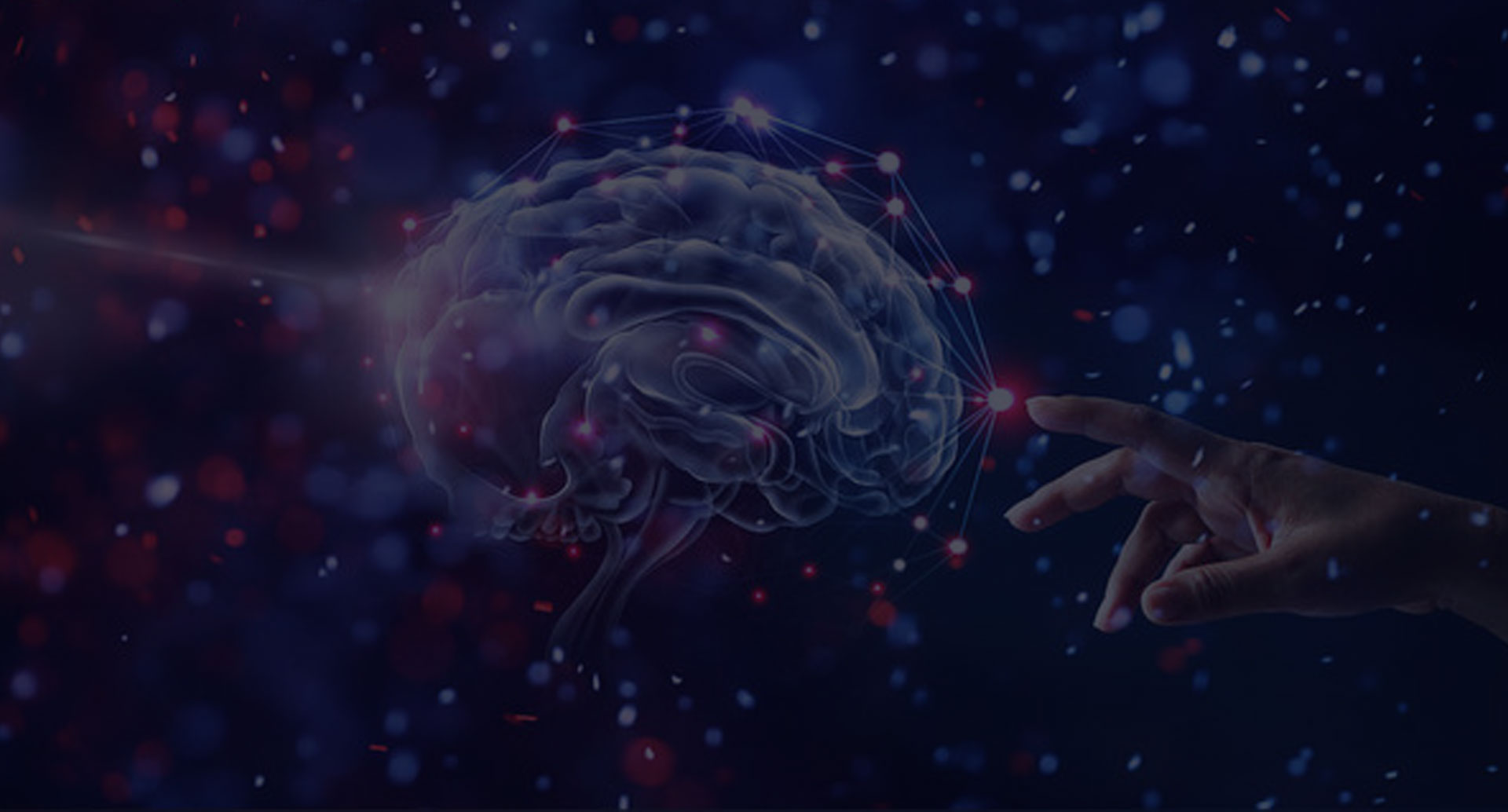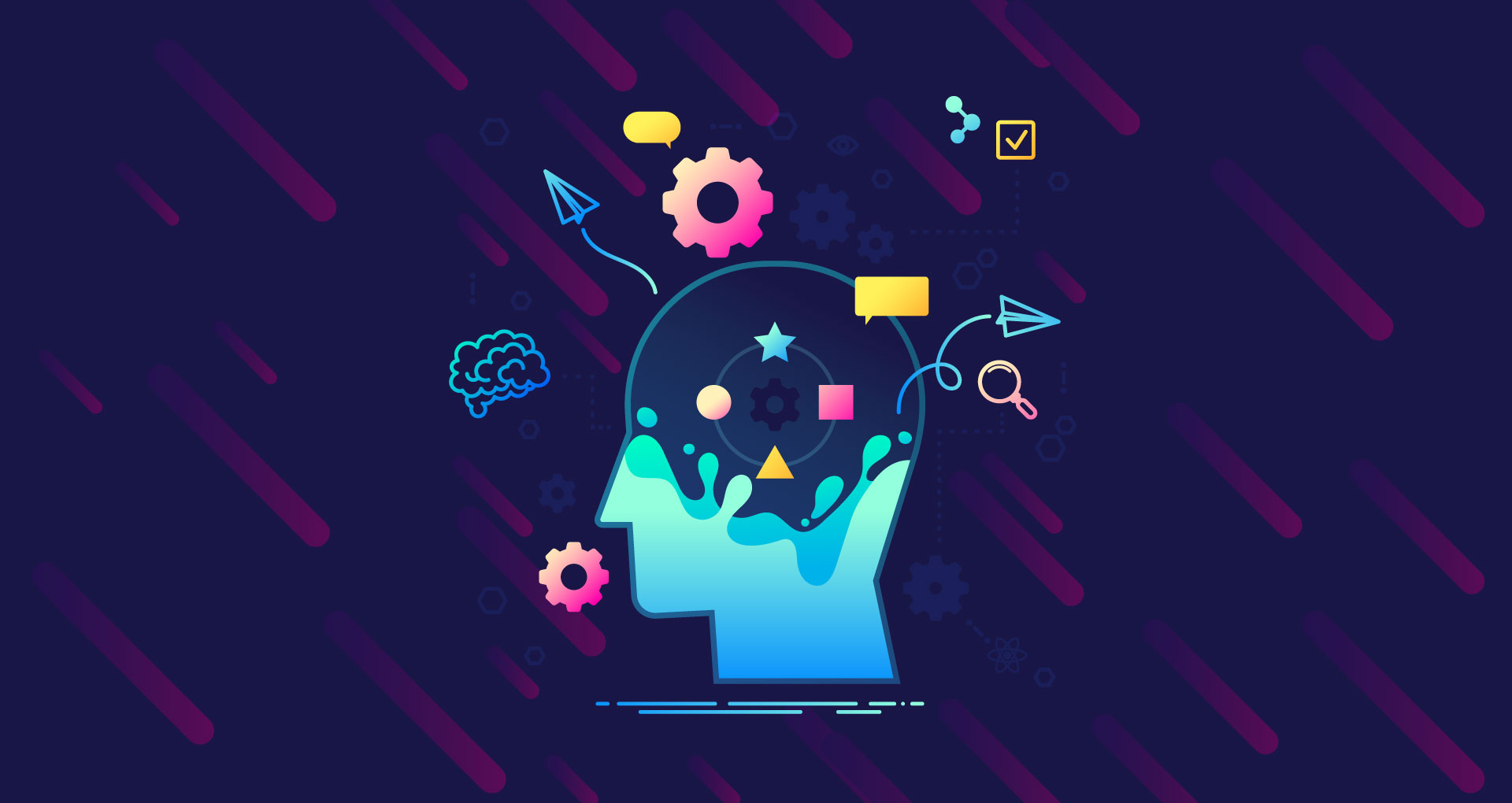
Anshul Jain
23 Apr 2020
From self-driving cars and Google Maps to Uber, virtual personal assistants like Alexa and Echo, Snapchat, Gmail, etc., currently, we are all surrounded by applications powered by Artificial Intelligence (AI). Based on this popularity, there is no doubt that artificial intelligence has initiated, as believed by some economists, another Industrial Revolution, where machines with human-like capabilities are performing tasks that were earlier only made possible by humans. In short, the power of Artificial Intelligence, along with Neural Networks, Machine Learning, Deep Learning, and more, is being harnessed by organizations to create services and software that are reshaping industries, by transforming their processes.
Among these branches of Artificial Intelligence, Machine Learning is considered to be the most prominent technology, as it is capable of automating processes, reducing processing power and time as well as the possibility of errors. So, let us get an insight into the workings of machine learning and understand how it will become one of the pillars of the technology of tomorrow.
What is Machine Learning?
A key player in a wide range of critical applications used today, Machine Learning, is a subset of Artificial Intelligence that provides computers the ability to learn through inference and pattern analysis, without needing to be explicitly programmed. This actionable subset of AI is used to create predictive models that don’t require any prior programming to perform tasks.
Earlier thought to be a reinvention of the generalized linear models of statistics, Machine Learning is considered to be a scientific study of algorithms and statistical models, which helps machines and systems learn from previous computations, which further enables them to produce reliable, repeatable decisions, and results. Moreover, it assists organizations to quickly and automatically produce models that can analyze a large volume of complex data and deliver more accurate results.
Let us further understand the importance of machine learning with the help of an example.
Machine Learning Examples:
Autonomous vehicles and self-driving cars are the future of the automobile industry and some of the most prominent examples of Machine Learning technology. They use machine learning algorithms for the continuous rendering of the real-world or the surrounding environment and to predict possible, as well as required changes. From navigation and object detection to object classification, localization, movement prediction, and more, machine learning is used in autonomous vehicles for real-time perception and decision-making.
That’s not all. Machine Learning provides potential solutions in various domains such as natural language processing, image recognition, data mining, etc.
How Does Machine Learning Differ From Traditional Programming?
As stated earlier, machine learning, which is also known as Augmented Analytics, is used to train computer systems and software to learn from past computations and data for decision making. However, a common question that frequently arises when defining machine learning is, how it is different from traditional programming.
Traditional programming is the oldest form of programming that refers to any manually created program, that uses an input variable and runs on a computer to produce output. Here the rules are formulated or coded manually. Whereas, in machine learning, the input and output data are already fed to the algorithm, which automatically creates the program and formulates the rules from the data. This yields a powerful insight that is further used to predict future outcomes. In short, machine learning, along with AI, succeed where traditional programming fails.
Components of Machine Learning:
In recent years, the field of machine learning has witnessed a great transformation, with the development of numerous new algorithms. These algorithms though immensely different are a combination of three major components, which together make a machine learning model. These three important components of machine learning are:
1. Representation:
Describes how the knowledge or data is represented. Here, a classifier must be represented in a formal language that can be handled by the computer.
2. Evaluation:
It is how the data/model is judged or preferred over another. Here an evaluation function, which is also known as an objective function or scoring function is used to distinguish suitable classifiers from the bad ones.
3. Optimization:
Estimates model parameters using optimization algorithms, which helps search among the classifiers in the language for the highest-scoring classifier.
From machine learning to data science workflow, these three components are crucial for the implementation of learning algorithms.
Types of Machine Learning Algorithms:
Before we move on to discussing the most common machine learning algorithms used, let us understand the types of machine learning algorithms that form the foundation of machine learning. There are mainly four machine learning techniques, each of which is further divided into different categories. The different types of machine learning algorithms are:
1. Supervised Learning:
The first type of learning algorithm supervised learning trains the program on a predefined set of training examples that facilitate its ability to reach a conclusion. This training process continues until the desired level of accuracy is achieved by the training data. Supervised Machine Learning is further categorized into:
A) Classification:
This is a supervised learning task where the output has defined labels. The objective here is to predict and evaluate discrete values belonging to a particular class based on the accuracy.
B) Regression Algorithm:
Another supervised learning task where the output has continuous value. Here the objective is to predict the value closest to the actual output and then evaluate it by calculating error value.
2. Unsupervised Learning:
This type of machine learning algorithm learns from test data that is not labeled, classified or categorized. Moreover, it identifies the commonalities in the data and reacts based on their presence and absence in each new piece of data. It uses two techniques to achieve this:
A) Clustering:
It discovers inherent groupings, structure or patterns in a collection of uncategorized data.
B) Association Rule:
Helps establish associations as well as discover relationships between variables in large databases. .
3. Semi-Supervised Learning:
Semi-supervised learning, as suggested by the name falls between supervised and unsupervised learning. Here, the algorithm is trained upon a combination of labeled and unlabeled data, which produces considerable improvements in learning accuracy.
4. Reinforcement:
This type of machine learning algorithm trains software agents to complete a task using positive and negative reinforcement. It continuously learns from the environment in an iterative fashion and aims at using observations to take actions that would maximize the reward or minimize the risk. There are two types of reinforcement:
A) Positive Reinforcement:
It is an event that occurs due to a specific behavior. Moreover, it increased the strength and frequency of the behavior and impacts it positively.
B) Negative Reinforcement:
It is the strengthening of behavior because of avoiding and stopping a negative condition.
5. Self Learning:
A machine learning paradigm, self-learning requires no external rewards and/or teacher advice and is driven by the interaction between cognition and emotion. There is neither a separate reinforcement input nor an advice input from the environment.
6. Feature Learning:
Also known as representation learning algorithm, feature learning transforms the information in the input to make it useful as a pre-processing step before performing classification or predictions.
7. Sparse Dictionary Learning:
It is a feature learning method where training is represented as a linear combination of basis function and is assumed to be a sparse matrix.
8. Anomaly Detection:
Also known as Outlier Detection, anomaly detection identifies rare items, events or observations that raise suspicions by being significantly different from the majority of the data.
These algorithms, though different in their approaches, the type of data they input and output, as well as the type of task they are intended to perform are an integral part of machine learning, as they help make machines capable of performing their intended tasks.
Machine Learning Algorithms:
As stated earlier, researchers and data scientists have created numerous machine learning algorithms, which makes it important for us to identify the once that are most popular and suitable for completing tasks. Some of these popular algorithms for machine learning are:
1. Linear Regression:
A well known and well-understood algorithm, linear regression is a linear model that is used to estimate the real values based on continuous variables. It expresses a linear relationship between the input X and output Y of the algorithm, which is represented as a line in the form of y = a + bx.
2. Logistic Regression:
Unlike linear regression, logistic regression is a classification technique that is used to estimate the discrete values based on a given set of independent variables. It is also known as logit regression, as it predicts the probability of occurrence of an event by fitting data to a logit function.
3. Decision Tree:
Used to classify data, the decision tree uses a tree-like graph to show the predictions that result from a series of feature-based splits. It consists of a series of nodes that start at the base with a single node and extends to various leaf nodes that represent the categories.
4. Naive Bayes:
Another important classification technique, Naive Bayes is a supervised machine learning algorithm that uses Bayes' theorem to make predictions. It assumes that the presence of a particular feature in a class is unrelated to the presence of any other features. Moreover, Naive Bayes is particularly useful for large data sets, as it is easy to build.
5. kNN:
K-Nearest Neighbors or kNN is a machine learning algorithm that can be used to solve issues of classification and regression. It makes predictions using the training data directly, wherein it uses the entire dataset as the training set, rather than splitting the data into training and test set.
6. K-Means:
A simple and popular unsupervised machine learning algorithm, K-Means helps solve clustering problems. It consists of various clusters, with their own centroids. The objective of this algorithm is to identify k number of centroids and then allocates them a data point.
Now that we understand the basics of machine learning algorithms, let’s get a peek at how machine learning works.
How Does Machine Learning Works?
The process of machine learning involves two techniques, Supervised and Unsupervised learning. However, to accomplish a task as well as to make accurate predictions, it follows a set workflow that involves:
1. Gathering Data:
The process of machine learning is initiated by gathering the training data. This is the most important step of the process as the quantity and quality of the data gathered determines the effectiveness of the predictive model.
2. Data Preparation:
After accumulating the training data, it is loaded into a suitable place and prepared for use in machine learning training.
3. Model Selection:
Since there are numerous models created by researchers and data scientists, such as Linear Regression, SVM, Naive Bayes, kNN, K-Means, Random Forest, etc., it is crucial to select a suitable model.
4. Training:
Once the suitable model is selected, the data is used to incrementally improve the model’s ability to perform the necessary prediction. This involves initializing some random values for variables and attempting to predict the output. This is the core of machine learning and it is based on this step that future predictions are made by a machine learning system.
5. Evaluation:
Evaluation is the step where the effectiveness of the model is tested. This allows the model to be tested against data and scenarios that weren’t used in training. Moreover, it helps us see how the model performs in the real world.
6. Hyperparameter Tuning:
Another important step of the workflow, hyperparameter tuning or parameter tuning is used to further improve the training, to ensure the accuracy of the predictions.
7. Prediction:
Finally, the model is used to make predictions.
To ensure accurate implementation of the process, machine learning engineers must possess a few crucial skills like software engineering chops to implement models in practice, knowledge of machine learning theory to determine which model to implement and why, ability to use statistical inference to quickly evaluate whether a model is working or not, domain-level knowledge, as well as the ability to communicate insights.
Applications of Machine Learning:
The impact of machine learning can evidently felt across the spectrum, with industries leveraging its capabilities to create machines and computers with human-like abilities. Therefore, to highlight some of this impact, listed below are a few of these machine learning applications that are acting as a stepping stone for the futuristic tech and helping industries reform today.
1. eCommerce:
Predicting customer churn to product recommendations, predicting fraudulent transactions, and more, machine learning application is making eCommerce more secure and reliable for customers.
2. Finance:
Machine learning is helping finance and banking sector improve transaction security, as well as evaluate the risks on credit offers. Additionally, it is becoming useful in determining where to invest money and who to send credit cards, among other things.
3. Social Networks:
Facebook, Pinterest, Instagram, etc., social media networks are relying on machine learning algorithms to improve insights for users and provide them with content that resonates with their interest.
4. Intelligent Gaming:
The implementation of machine learning in the gaming industry has helped bring improvements in the Graphics Processing Units (GPU) processing speed. Moreover, it is simplifying modeling complex systems and world creation as well as enhancing images and rendering, etc.
5. Virtual Personal Assistants:
From Alexa, Google Now, and Siri to other virtual assistants, machine learning is an important part of virtual personal assistants. It collects and refines information/data based on their previous involvement.
6. Email Spam & Malware Filtering:
Machine Learning is currently playing a key role in filtering spam and malware from the user’s inbox. Gmail filters 99.9% of spam emails through machine learning algorithms.
7. Web Search:
Another area where machine learning has initiated a revolution in the web search. Search engines are using the machine learning algorithms to rank pages based on what users are more likely to click on, making search more convenient and quick.
Benefits of Machine Learning:
Being one of the most effective subfields of AI, machine learning offers a range of benefits to organizations. From being highly effective in data mining to quickly reviewing large volumes of data, this tech is everything that Artificial Intelligence represents. A few of these benefits are:
- Automates tasks.
- Supplements data mining.
- Easily identifies trends and patterns.
- Performs continuous improvements that help make better decisions.
- It is good at handling multidimensional and multi-variety data.
- It helps create smart applications, along with big data, natural language processing, etc.
Drawbacks of Machine Learning:
Machine learning, though extremely beneficial, is not entirely perfect. There are various factors that serve to limit it, a few of which are mentioned below:
- Data acquisition is challenging as it requires massive data sets to train on.
- It has a time constraint in training.
- Lacks verification.
- It requires excessive time and resources.
- Though autonomous, it is highly susceptible to errors.
- Interpreting gathered results accurately is challenging.
What is the Difference Between Machine Learning, Artificial Intelligence, Deep Learning, & Data Mining?
Artificial intelligence, machine learning, deep learning, and data mining are four different technologies that are though connected differ from one another extensively. To help you avoid overlapping as well as confuse them, we have listed some critical differences between the four.
Artificial Intelligence
- 1. It is the intelligence demonstrated by machines.
- 2. Makes machines capable of learning from experience, adjust to new inputs and perform human-like tasks.
- 3. AI works with machine learning and NLP to process large data and recognizing patterns.
- 4. Currently, AI is highly dependent on humans for programming.
Machine Learning
- 1.It is a subset of Artificial Intelligence.
- 2.It helps computers to automatically learn from data and past experiences and make predictions and provides real-time feedback.
- 3.Used in spam filters, web search, fraud detection, etc. it is used in vast areas.
- 4.Machine learning is automated.
Deep Learning
- 1.A subset of Machine Learning.
- 2.It works similar to the human brain and is used to process information, identify patterns, make comparisons, etc
- 3.Deep learning networks rely on layers of Artificial Neural Networks.
- 4.Like machine learning, it is also automated.
Data Mining
- 1.Process of discovering patterns in large data sets.
- 2.Identifies relationship between two or more dataset attributes to predict outcomes or actions.
- 3.Used in cluster analysis, it helps get rules from existing data.
- 4.Involves human interference.
Conclusion:
Machine Learning, the technology believed to revolutionize development processes across industries, has made dramatic improvements in the past few years. It, along with deep learning, natural language processing, etc. is helping make high-value predictions that guide better decisions and smart actions in real-time, without human intervention. In short, it is the doorway to the world of machines that has intelligence at par or superior to humans.




